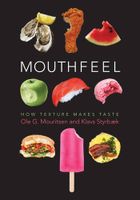Advertisement
Fats in Food
Appears in
By Ole Mouritsen and Klavs Styrbæk
Published 2017
Fats, whether in the form of solid fats or liquid oils, can affect the mouthfeel of a food in a number of ways. These depend on the melting properties of the fats, as well as how they can form emulsions with watery liquids. Of all culinary ingredients, fats are possibly the ones that can be used most flexibly to influence texture. The most common ones are derived from either plants (margarine and plant oils) or animals (butter, margarine, lard, suet, and fowl).
Large pieces of pure fat are rarely incorporated into prepared foods, even though very fatty animal products, such as lard and suet, play a greater or lesser role in some dishes. Nevertheless, fats are often present in raw ingredients sourced from both plants and animals, either in the form of discrete fat deposits or trapped in their tissues. So, as a matter of course, they contribute to the mouthfeel these ingredients impart to prepared food as well as help release taste and odor substances. How a low-fat content affects mouthfeel is well known from the uninspiring taste of a beef patty made with very lean meat.

